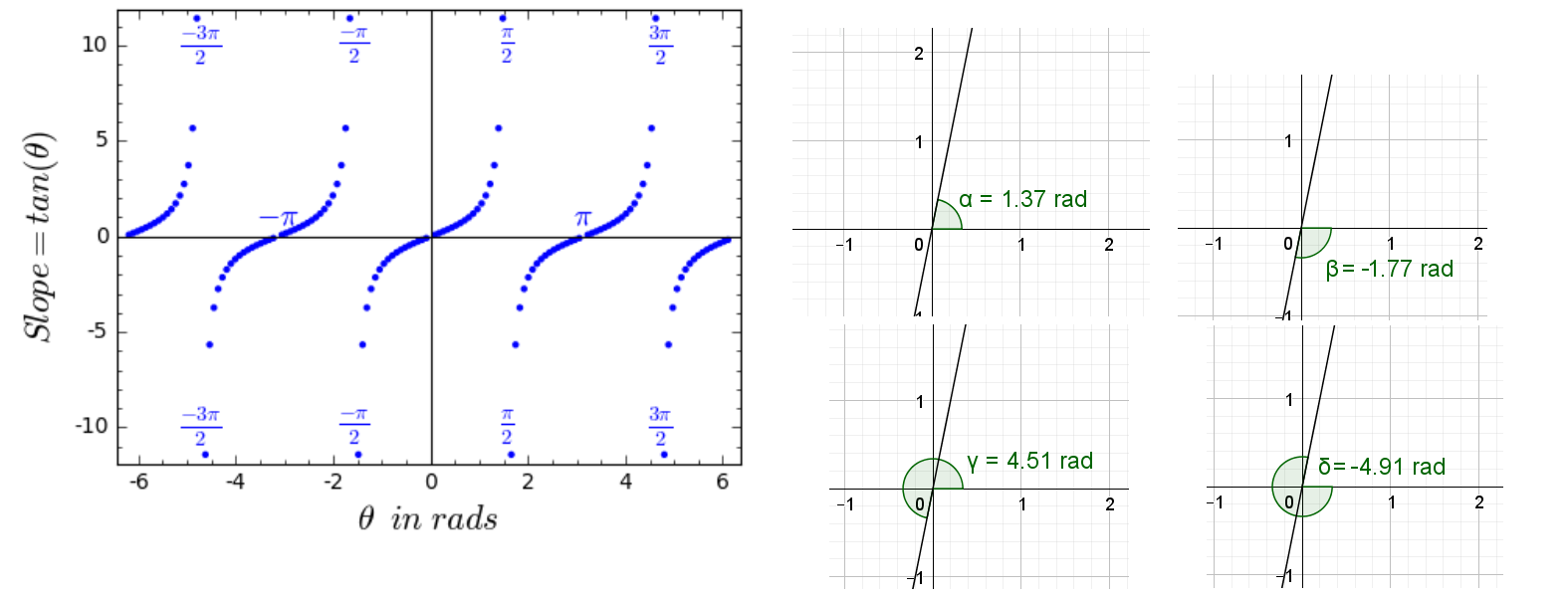Prior Slope Next
$$Slope=\frac{\Delta y}{\Delta x}=\frac{y_{1}-y_{2}}{x_{1}-x_{2}}=\frac{rise}{run}=\frac{opposite}{adjacent}=\frac{sin(\theta)}{cos(\theta)}=tan(\theta) \tag{EQ 1}\label{EQ 1}$$ Equation $\eqref{EQ 1}$ gives some of the definitions of slope. In all cases we are trying to express how much the line changes vertically whenever it changes by some fixed amount horizontally, i.e. how steep is the line. Slope is not an angle. {Aside: Slope is the tangent of an angle. The units of slope are the $y$-axis units divided by the $x$-axis units and they vary with each particular graph.} Even though slope is used to express steepness and even though we speak of slopes of highways and mountains in terms of degrees, the slope in mathematics is a number between $\pm \infty$ and not an angle. A slope of zero is a horizontal line. A slope of $+\infty$ is a vertical line in the up direction. Likewise, a slope of $-\infty$ is a vertical line in the down direction. A slope going up to the right is a positive slope. A slope going up to the left is a negative slope.
Answer:An obvious way to proceed is to input the number $5$ into a calculator and use the $tan^{-1}$ key. {Aside: The key $tan^{-1}$ stands for inverse tangent and is not 1/tangent. Instead it is the arctangent. That is, it returns the angle whose tangent is equal to the input number. Depending on the calculator mode setting, it may return rads, degrees, or grads.} When we do that it returns $\theta=1.3734=78.69^{\circ}.$ But there are a few more values whose tangent is 5. For example, $-1.768\;rads=-101.3^{\circ}$ and $4.515\;rads=258.69^{\circ}$ and $-4.9098\;rads=-281.31^{\circ}$ Refer to the figure for further information.
